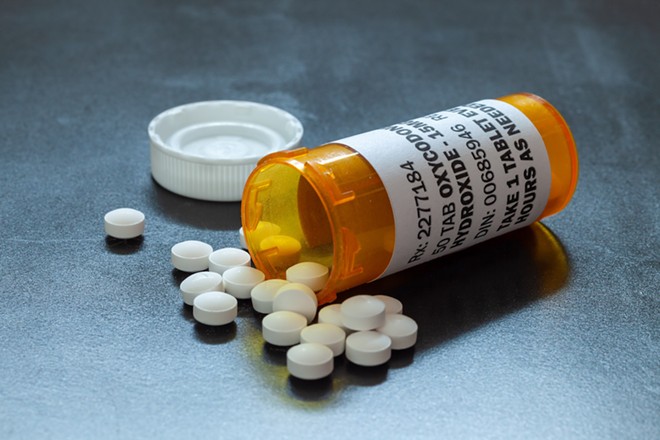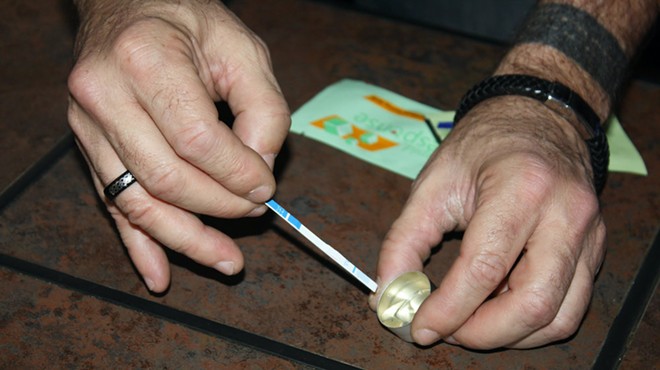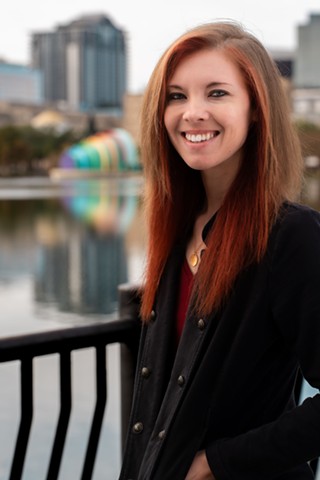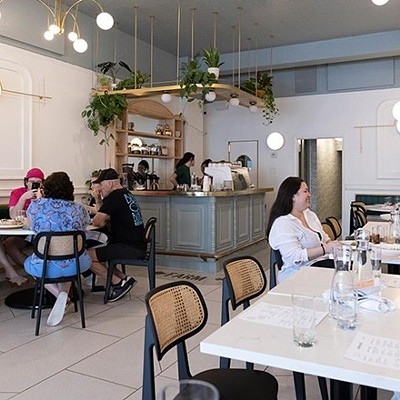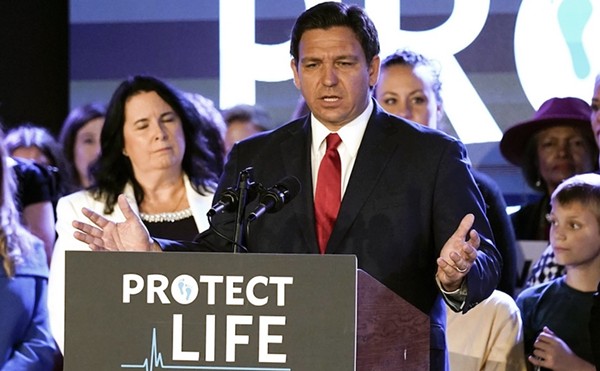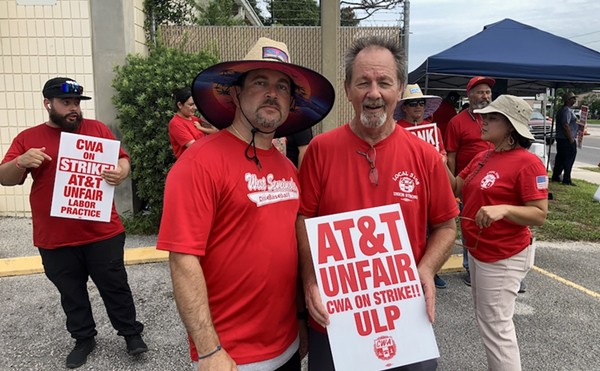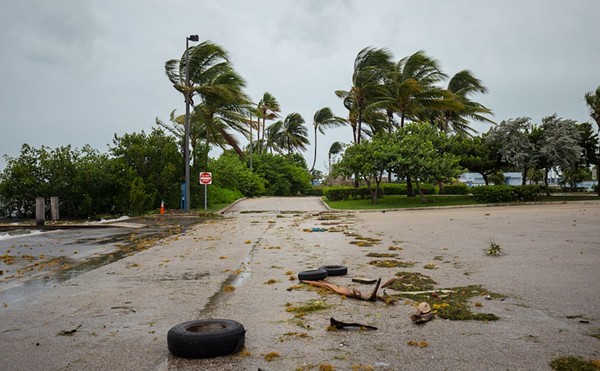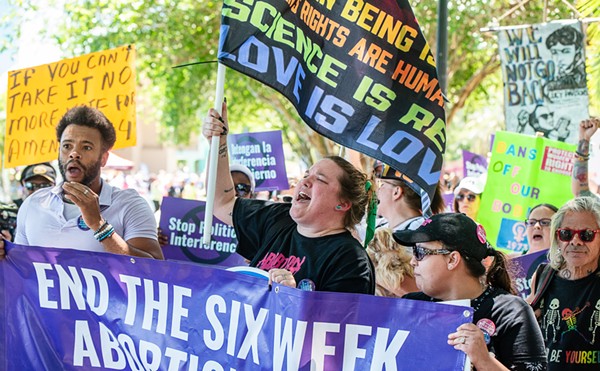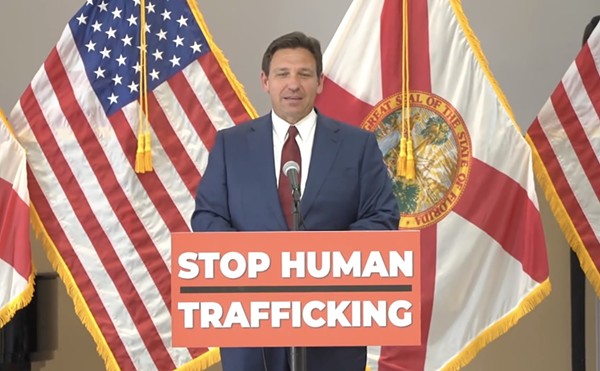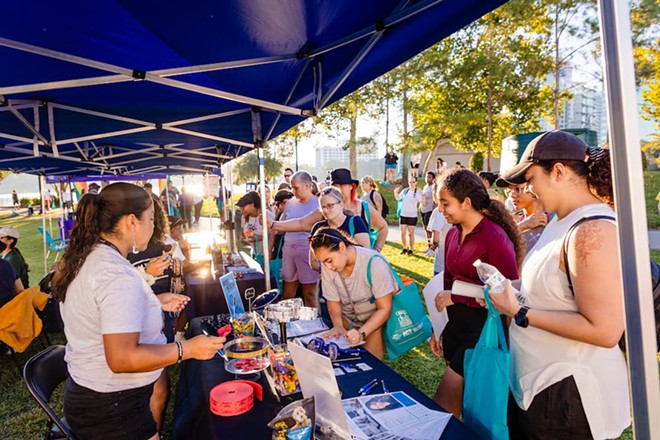
Just west of downtown Orlando on Westmoreland Street, the Orange County Medical Clinic has launched a new medication-assisted treatment program in partnership with a nonprofit treatment provider for uninsured residents with opioid use disorder.
The program, funded by money that Orange County received through national settlements with opioid manufacturers and distributors, is available at no cost, and is designed for people with chronic or severe addiction who lack the resources to access treatment otherwise.
People who were recently released from jail or who have ended up in local hospital emergency rooms multiple times for overdose, will be prioritized for the program, which is launched in partnership with Specialized Treatment Education and Prevention Service.
“The whole point of this is to provide access to people who wouldn't typically have access to care,” Dr. Thomas Hall, director of the county’s Office for a Drug Free Community, told Orlando Weekly. Both repeat overdoses and a history of incarceration are known risk factors for fatal opioid overdose, which can be identified by signs such as slowed or stopped breathing, pale or clammy skin, or loss of consciousness.
“The whole point of this is to provide access to people who wouldn't typically have access to care”
tweet this
The steep cost of quality addiction treatment — hundreds or thousands of dollars for those who lack insurance — and a lack of knowledge about available community resources can be major barriers to getting help, Hall added. “Do they know how to get treatment? Do they know where they can get it? We’re trying to market to that group that there’s care available.”
The goal is to mitigate a crisis that began with addictive prescription opioids like OxyContin in the late '90s, before a crackdown on such drugs led those with addiction to street drugs like heroin, and now fentanyl, a powerful (and potentially deadly) opioid that can be prescribed for certain pain conditions, but is also manufactured and sold on the black market.
Medication-assisted treatment, a program that refers to a combination of behavioral therapy and medication, is the most effective treatment for opioid addiction, more formally referred to as opioid use disorder. Studies have found that certain medications can significantly reduce the risk of opioid overdose and prevent death among those ingest opioids, yet only a quarter of people with opioid use disorder actually receive it.
Dr. Hall said medication-assisted therapy, effective for people addicted to opioid painkillers, can serve as a “bridge” for people in the early stages of recovery. “[Medication-assisted treatment] is more effective in treating an opioid use disorder than individual therapy and self-help groups alone,” Hall explained.
It's a holistic approach to treatment that has gradually received more support from treatment providers and the U.S. government over the years, with more evidence emerging to dispel the myth that MAT simply trades one addiction for another. The length of treatment can vary depending on each person's individual needs, and may range from months, to years for some, if that's considered by treatment providers to be the best option for continued stability.Buprenorphine, a “gold standard” medication for opioid use disorder that the new program in Orange County offers, can specifically help curb drug cravings and can ease uncomfortable drug withdrawal symptoms, according to Hall.
There are three medications that are approved by the U.S. Federal Drug Administration (FDA) to treat opioid addiction: Buprenorphine (also known as Suboxone, when combined with naloxone), methadone, and naltrexone (the generic name for Vivitrol).
Methadone, a long-acting opioid that can be safely administered to treat addiction, is strictly regulated by the federal government, and requires visiting a clinic daily, while naltrexone has delivered spotty results.
Orange County’s medical clinic, located at 101 S. Westmoreland Drive, will primarily be offering buprenorphine and Suboxone for addiction, according to Hall, although Vivitrol will also be available. Access to buprenorphine, a partial opioid agonist that prevents a person from getting high off other opioids, was made easier last year under the Biden-Harris administration, which eliminated a bureaucratic hurdle known as the “X Waiver.”
Prior to the elimination of that waiver requirement, doctors had to undergo an intensive (and burdensome) approval process in order to be able to prescribe the life-saving drug. Research found just 5 percent of medical providers had been licensed to prescribe it, prior to the elimination of the waiver requirement, creating vast treatment deserts across the country for those in need.
Treatment has historically been less accessible for people of color with addiction (who face additional barriers to care, such as stigma) and for rural communities with fewer providers. The stakes of lacking access to treatment and other protective resources, such as social support from family or friends, are high.
Overdose deaths involving opioids in Orange County nearly doubled over a five-year period, from 175 deaths in 2014 to 342 deaths in 2019. The problem, mostly driven by the highly potent opioid fentanyl, worsened during the COVID-19 pandemic, as people suffered from isolation, stress, job loss, and disruptions in access to care.
To prevent spread of the virus, treatment centers closed their doors or placed restrictions on the number of patients they could accept. In-person support groups shuttered, or moved online. Naloxone, a drug capable of reviving someone who's overdosed on opioids, became less accessible.Stress drove some in recovery during the pandemic to pick up a bottle — of booze, drugs, or other substances — to cope. People during COVID used drugs alone, instead of in pairs or groups, thereby increasing the risk that, if someone did overdose, no one would be around to revive them.
More than 106,000 people in the United States died of overdose in 2021 — a record high number that rippled through communities. Since then, the number of annual overdose deaths has slowly decreased nationally, but data shows that thousands of people in Florida still lose their lives to fatal overdose each year, resulting in devastation for the loved ones, parents, and friends they leave behind.
In Central Florida, Orange County saw its first small drop in overdose deaths in 2022, according to data from the Medical Examiner's Office, followed by a small increase the following year.
Hall said that fentanyl, a drug that can be deadly in very small amounts, is still the primary driver of overdoses locally, even with the infiltration in local drug supplies of other powerful substances like nitazenes (a class of synthetic pain relievers that have never been approved for use in the United States).
Fentanyl, a drug up to 50 times stronger than heroin, is often mixed in with other street drugs, such as cocaine, and may be marketed as a different drug entirely — including black market versions of Xanax or Klonopin (prescription drugs commonly taken for anxiety).
The county has identified certain trends in who’s most greatly impacted. One in five overdose deaths in Orange County occur among people who were recently released from the local jail, according to Hall. Compared to the general public, incarcerated people are at least 40 to 129 times as likely to die from drug overdose within weeks of their release. Research has found that overdose is the leading cause of death for anyone recently released from jail or prison.
These statistics encouraged Orange County to become the first county in Florida to offer medication-assisted treatment inside its local jail, but Hall admitted that a person’s success in maintaining recovery following release isn’t guaranteed.
A lack of social support, triggers to use at home, or limited employment and housing opportunities can all factor into a person’s risk for relapse. “If somebody is not housed, if they don't have friends, they don't have social support of others, it's a lot easier to relapse,” said Hall, who has over 25 years of experience as a mental health and addiction treatment provider.
Cheryl Bello, chief executive officer of STEPS, told Orlando Weekly earlier this year that lacking reliable transportation and childcare — an increasingly steep expense for families — can also serve as barriers to continued treatment, particularly for mothers with addiction.
According to a county news release, the clinic’s new MAT program in Parramore will offer telehealth services for patients, in addition to in-person care, to help meet people where they're at. Patients can be referred to the program by a treatment or social services provider, or call the clinic for more information about enrollment.
The program, which will begin as a one-year pilot, is being funded by $1 million in funds the county received through national settlements with opioid manufacturers and distributors accused of flooding communities with drugs they knew were highly addictive.
Hall said the program in Parramore could continue past one year, if they demonstrate success, but the county would likely have to pitch in its own government funds for that to happen.
Altogether, the county will receive an estimated $60 million over the next 15 years from those national opioid settlements, with much of that scheduled to come in within the first 10 years. The bulk of funds — 85 percent — must be spent on addiction treatment and prevention programs, under stipulations of the agreements.
In addition to the new medication-assisted treatment program in Parramore, Orange County leaders earlier this year also allocated settlement funds for:
The distribution of fentanyl test strips (which can detect fentanyl in street drugs, and help prevent accidental overdose)
A mobile medication-assisted treatment clinic (expected to launch next month, according to Hall)
a no-cost residential treatment program for low-income women with opioid use disorder who are either pregnant or are new moms
Care coordination services at select Orlando Health hospitals, to help connect people who end up in the ER for overdose to appropriate treatment and aftercare
Find treatment for addiction
Opioid use disorder affects more than two million people in the United States. If this describes you, you’re not alone. And you have options.
If you or a loved one is struggling with opioid addiction, you can learn more about Orange County’s new treatment program by calling the MAT Clinic at (407) 955-7710.
Additional resources for identifying addiction and finding help:
Opioid use disorder: Signs and Symptoms — Cleveland Clinic
Treatment locator — Substance Abuse and Mental Health Services Administration
Find free naloxone/Narcan — ISaveFlorida
Get help in Orange County — Orange County Responds/OCFL
Follow us: Apple News | Google News | NewsBreak | Reddit | Instagram | Facebook | Twitter | or sign up for our RSS Feed




